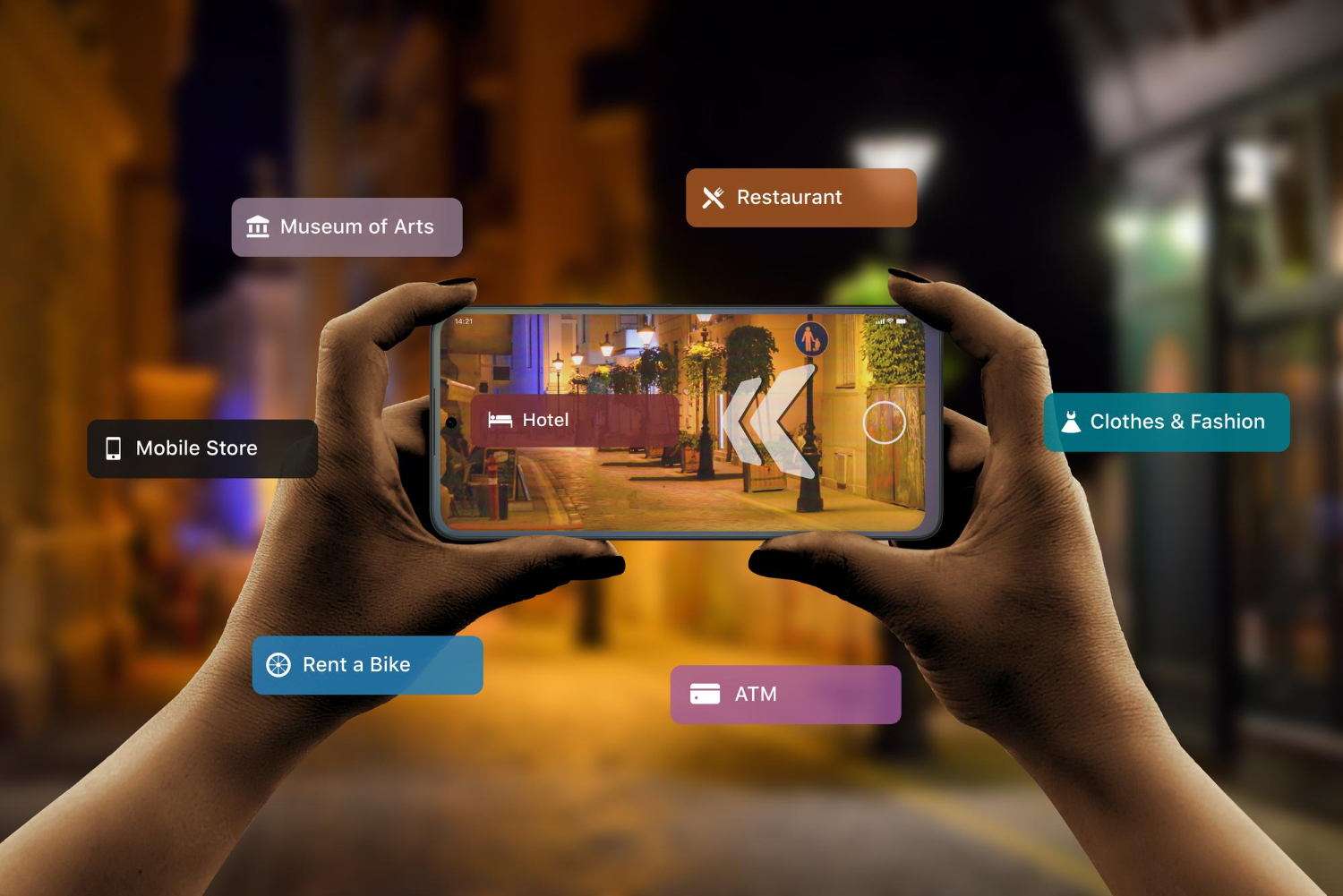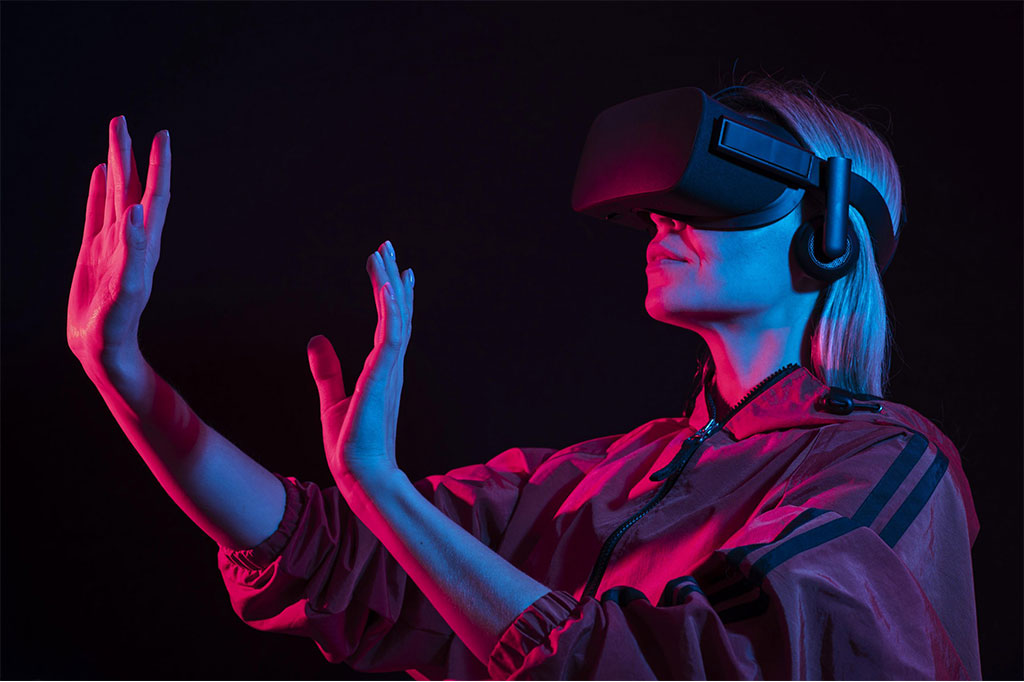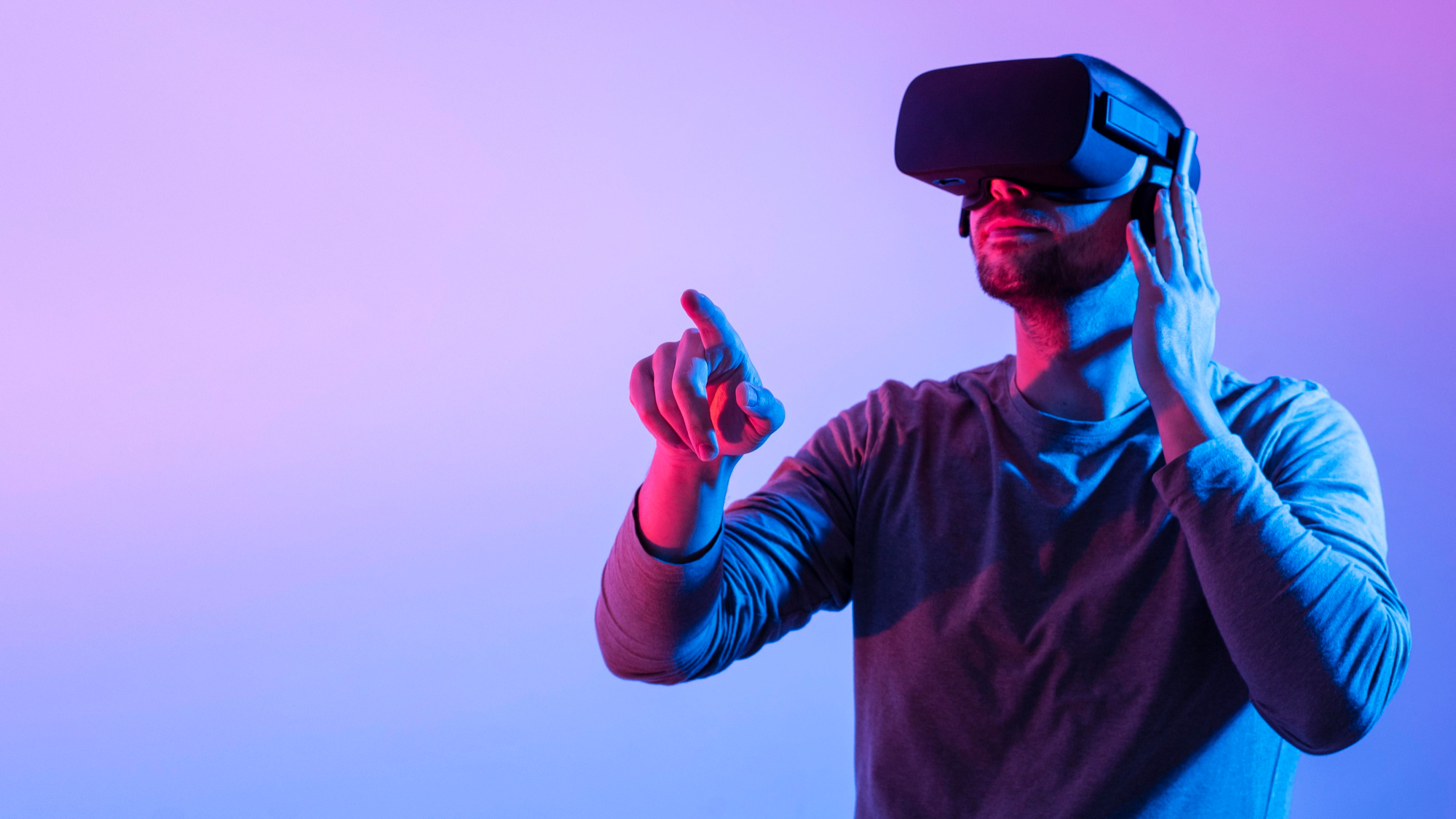
Augmented Reality is a technology that enriches the perception of the real environment with computer-generated virtual elements such as images, videos, sounds, or 3D models. Unlike Virtual Reality, which creates a completely digital environment, augmented reality overlays onto the physical world, providing a blended experience that enhances our interactions and knowledge.
AR relies on devices such as smartphones, tablets, or smart glasses to visualize the virtual elements. Through the camera and sensors of these devices, augmented reality recognizes and tracks the physical environment, allowing digital objects to integrate and be interacted with in real-time.
Use Cases of Augmented Reality
Augmented reality has found applications in a wide range of fields and industries, showcasing its versatility and transformative potential. Here are some of the prominent use cases:
- Education: AR has revolutionized the way we learn and teach. It enables students to explore abstract concepts visually and practically, turning textbooks into interactive experiences. It is also used for professional training, where workers can practice skills in a virtual environment before applying them in real-world scenarios.
- Industrial and Manufacturing: In the industrial sector, AR is used for maintenance and repair of complex equipment. Technicians can see real-time information about the devices they are repairing, facilitating the process and reducing downtime. Additionally, designers can visualize 3D models of products and make modifications before production.
- Medicine and Healthcare: AR has multiple applications in medicine, ranging from surgical planning to medical student training. It allows doctors to superimpose medical images in their field of view during procedures, enhancing precision and reducing risks. It is also used for rehabilitation and patient treatment, creating interactive virtual environments that aid in recovery.
- Gaming and Entertainment Applications: Augmented reality has made a significant impact on the gaming and entertainment industry. Notably, games like Pokémon Go allowed players to capture virtual Pokémon overlaid onto the real environment using their smartphones. AR applications also enable users to interact with virtual characters, play digital board games, and engage in social augmented reality experiences.
- Navigation and Mapping: AR has improved the way we navigate and explore the world. Applications like Google Maps utilize augmented reality to overlay real-time navigation directions onto the camera view, facilitating orientation and identifying landmarks. This is especially useful for pedestrians, as they can see directions in the real environment while walking.
- Shopping and E-commerce: AR is revolutionizing the way we shop for products. Some applications allow users to virtually try on clothing, accessories, and makeup using their device’s camera. This provides them with an idea of how the products would look on them before making a purchase. Additionally, 3D images of furniture or decorations can be superimposed into the real environment of a house, helping buyers visualize how the items would look in their space.
- Training and Simulation: AR is used in training and simulation applications across various industries. For example, pilots can practice flight procedures in a virtual environment before flying in a real aircraft. Medical professionals can also benefit by conducting simulations of complex surgeries or medical procedures using AR. This provides a safe and practical way to acquire skills before facing real-life situations.
- Design and Architecture: Designers and architects utilize AR to visualize 3D models of buildings, interiors, and urban spaces in the real environment. This enables them to assess how designs will look in real-world contexts and make modifications before construction. They can also overlay technical information such as blueprints and specifications into the physical environment, facilitating the design process and collaboration.
- Remote Technical Assistance: AR is used in remote technical assistance applications, where an expert can guide a user in repairing or troubleshooting a device or equipment through real-time connection. Using the camera of a mobile device or smart glasses, the expert can overlay instructions and markers into the user’s environment, facilitating efficient and precise problem-solving.
- Marketing and Advertising: AR has found its place in the field of marketing and advertising, allowing brands to offer interactive and immersive experiences to their customers. For example, campaigns can be created with virtual elements superimposed onto physical spaces, capturing users’ attention and enabling them to interact with the brand in unique ways. This also includes virtual product trials and interactive shopping experiences.
Benefits of Augmented Reality
Augmented reality offers a range of benefits at both individual and business levels. Some of these benefits include:
- Enhanced Experience: AR provides an immersive and highly interactive experience that combines virtual elements with the real environment. This allows individuals to interact more naturally and enrich their perception of the world around them.
- Increased Efficiency: In various sectors, AR has proven to be a valuable tool for improving operational efficiency. By providing real-time information and guiding users through specific tasks, errors are reduced, and processes are accelerated.
- Improved Decision Making: AR can provide real-time contextual data and analysis, enabling informed and precise decision making. In sectors like architecture, it allows visualization of how a building will look before construction, facilitating design and decision-making throughout the process.
The Future of Augmented Reality
The future of augmented reality appears promising, with immense potential for growth and evolution. It is expected that the technology will improve in terms of accuracy, resolution, and processing capabilities, opening new doors for even more advanced applications.
AR devices are expected to become lighter, more compact, and aesthetically appealing, facilitating mass adoption. Additionally, advancements in 5G technology will provide faster and more reliable connectivity, enabling more immersive and collaborative AR experiences.
Augmented reality will also merge with other emerging technologies such as artificial intelligence and machine learning to enhance the recognition and personalization capabilities of virtual elements. This will create new opportunities in areas such as e-commerce, advertising, and entertainment.





